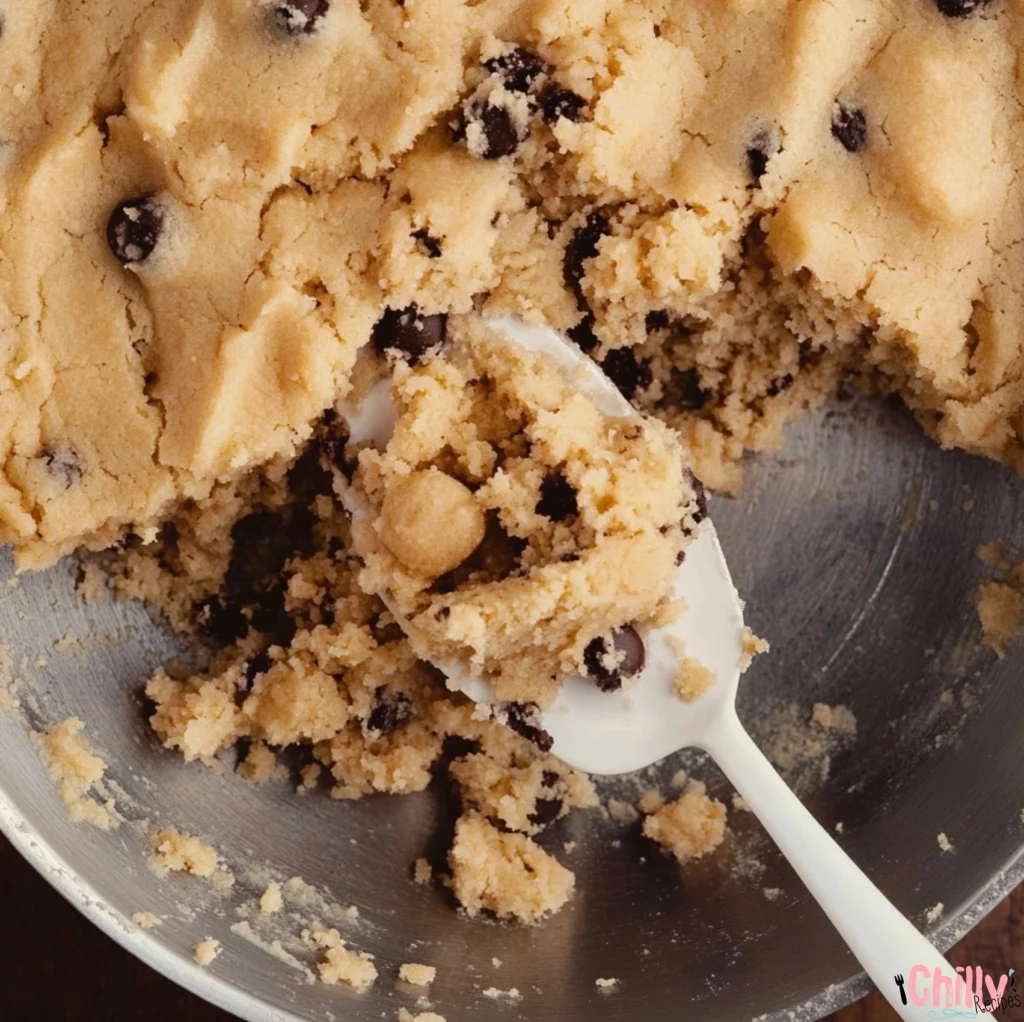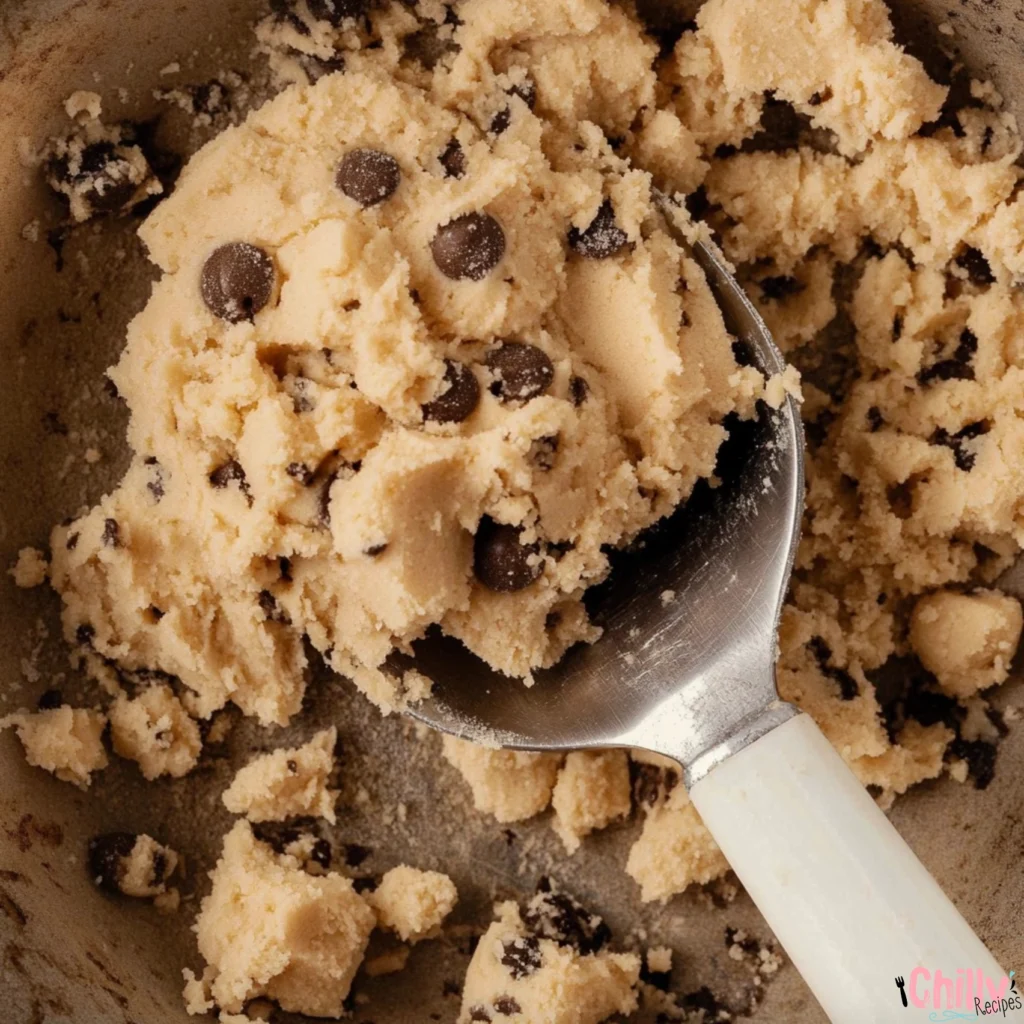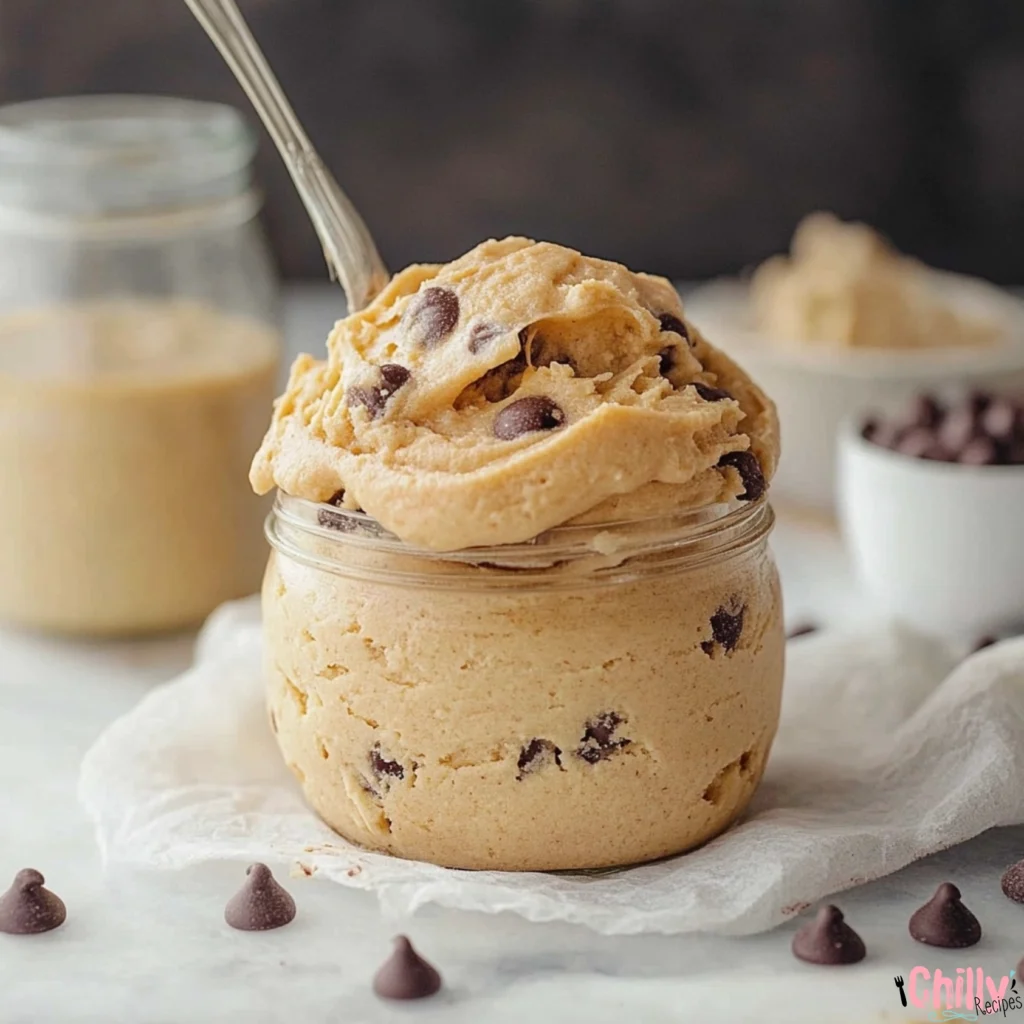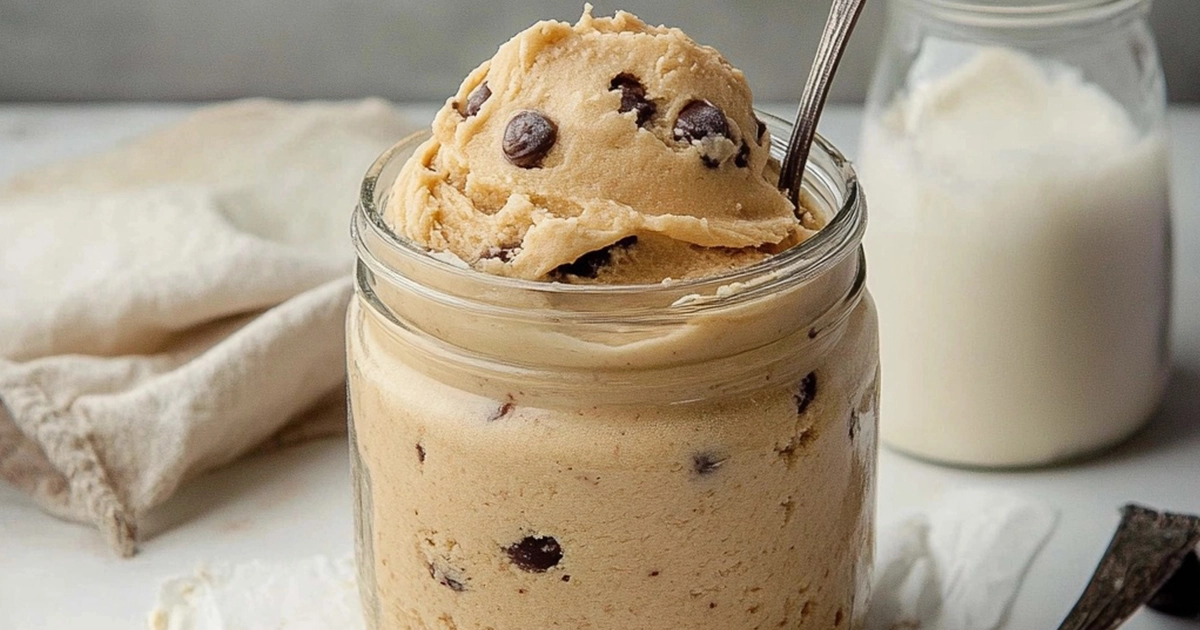Table of contents
- Introduction to Edible Cookie Dough
- Why Make Edible Cookie Dough Without Brown Sugar
- Safety First: Making Cookie Dough Safe to Eat
- Essential Ingredients for Edible Cookie Dough Without Brown Sugar
- Required Kitchen Tools and Equipment
- Step-by-Step Preparation Method
- Sugar Alternatives and Sweetening Options
- Flavor Variations and Mix-ins
- Common Troubleshooting Tips
- Storage and Shelf Life
- Nutritional Information and Dietary Considerations
- Conclusion
- FAQ
- What are the benefits of making edible cookie dough without brown sugar?
- What are some alternatives to brown sugar that can be used in edible cookie dough?
- How do I heat-treat my flour to make it safe for edible cookie dough?
- What are the essential ingredients needed to make edible cookie dough without brown sugar?
- What kitchen tools and equipment are required to make edible cookie dough?
- How do I adjust the texture and consistency of my edible cookie dough?
- What are some flavor variations and mix-ins I can add to my edible cookie dough?
- How do I properly store and preserve my edible cookie dough?
Discover the joy of making a delicious edible cookie dough recipe without brown sugar. This no-brown-sugar cookie dough is perfect for those who want to enjoy cookie dough safely. You’ll learn how to make a fun and easy edible cookie dough.
This edible cookie dough recipe lets you enjoy cookie dough’s sweetness without brown sugar. It’s a great choice for those who prefer not to use brown sugar in their baking. You’ll find it’s not only tasty but also simple to make, using basic ingredients and clear instructions.
Introduction to Edible Cookie Dough

In this article, you’ll get a complete guide to making edible cookie dough without brown sugar. You’ll learn about the key ingredients and safety steps. This will help you create a delicious no-brown-sugar cookie dough.
Key Takeaways
- Learn how to make a delicious edible cookie dough recipe without brown sugar
- Discover the essential ingredients and safety precautions for making no-brown-sugar cookie dough
- Get step-by-step instructions for preparing a mouthwatering edible cookie dough
- Find out how to enjoy the taste of cookie dough without the risks associated with raw eggs or brown sugar
- Explore the possibilities of customizing your edible cookie dough recipe with different ingredients and mix-ins
- Understand the importance of food safety when making edible cookie dough
Why Make Edible Cookie Dough Without Brown Sugar
Enjoying cookie dough safely is key. Making it without brown sugar is a smart move. It lets you tailor the recipe to your liking while keeping it safe to eat. By picking different sweeteners, you can make a tasty and safe treat.
Choosing not to use brown sugar can also help cut down on sugar. You can use honey, maple syrup, or coconut sugar instead. These sweeteners bring unique tastes to your cookie dough, perfect for trying new recipes.
Benefits of Edible Cookie Dough
Edible cookie dough without brown sugar has many perks. It avoids the risk of raw eggs, which can carry salmonella. Using different sweeteners also lowers the dough’s sugar content, making it a bit healthier. This way, you can enjoy cookie dough’s taste without worrying about cookie dough safety or too much sugar.
Alternatives to Brown Sugar
There are many sweeteners you can use instead of brown sugar. Here are a few:
- Honey: a natural sweetener with a distinct flavor
- Maple syrup: a sweetener with a rich, caramel-like flavor
- Coconut sugar: a low-glycemic sweetener with a mild flavor
These sweeteners can give your cookie dough unique tastes. By baking without brown sugar, you can make a delicious and safe treat for everyone.
| Alternative Sweetener | Flavor Profile | Sugar Content |
|---|---|---|
| Honey | Distinct, slightly bitter | High |
| Maple Syrup | Rich, caramel-like | High |
| Coconut Sugar | Mild, slightly sweet | Low |
Safety First: Making Cookie Dough Safe to Eat
When making edible cookie dough, food safety is key. You want it to be tasty and safe to eat. Heat-treating flour is a crucial step to kill bacteria in the flour. This is vital because the dough won’t be baked.
To heat-treat flour, preheat your oven to 350°F (180°C). Spread the flour on a baking sheet and bake for 5 minutes. Let it cool before adding it to your dough. This step is essential for safety.
Heat-Treating Your Flour
Heat-treating flour makes your edible cookie dough safe. It kills bacteria and other harmful microorganisms. This is crucial because the dough won’t be cooked in the oven.
Safe Ingredient Selection
Choosing safe ingredients is also important. Use pasteurized eggs or egg substitutes. Pick safe-to-eat chocolate chips or other mix-ins. By doing this, your dough will be safe and enjoyable for everyone.
| Ingredient | Safety Guidelines |
|---|---|
| Flour | Heat-treat at 350°F (180°C) for 5 minutes |
| Eggs | Use pasteurized eggs or egg substitutes |
| Chocolate Chips | Use safe-to-eat chocolate chips or other mix-ins |
Food Safety Tips
Follow food safety guidelines when making and storing edible cookie dough. Wash your hands before and after handling the dough. Store it in an airtight container in the fridge. Discard any dough left at room temperature for too long. By following these tips, you can enjoy your dough without worry.
Essential Ingredients for Edible Cookie Dough Without Brown Sugar
To make tasty edible cookie dough without brown sugar, you need a few key edible cookie dough ingredients. You’ll need flour, butter, sugar, and vanilla extract. For sugar, you can pick no-brown-sugar substitutes like white sugar or natural sweeteners.
Here’s what you’ll need:
- 2 cups of flour
- 1/2 cup of butter
- 1 cup of sugar
- 1 teaspoon of vanilla extract
For no-brown-sugar substitutes, honey, maple syrup, or agave nectar work well. But remember, these sweeteners taste stronger than sugar. So, you might need to use less of them. Also, using top-quality ingredients is key for the best taste and texture.
| Ingredient | Measurement |
|---|---|
| Flour | 2 cups |
| Butter | 1/2 cup |
| Sugar | 1 cup |
| Vanilla extract | 1 teaspoon |
With these edible cookie dough ingredients and no-brown-sugar substitutes, you can make a yummy and safe cookie dough. It’s perfect for everyone to enjoy.
Required Kitchen Tools and Equipment
To make edible cookie dough, you need the right kitchen tools and baking equipment. Having the right tools helps you mix ingredients efficiently. You’ll need a mixing bowl, whisk, and measuring cups.
For baking equipment, a hand mixer or stand mixer might be needed, depending on batch size. A rubber spatula is useful for scraping the bowl and mixing in ingredients. Here are the key kitchen tools you’ll need:
- Mixing bowl
- Whisk
- Measuring cups
- Hand mixer or stand mixer
- Rubber spatula
Quality kitchen tools and baking equipment make a big difference. They help you mix ingredients smoothly, making your cookie dough delicious.
Step-by-Step Preparation Method

To start making edible cookie dough, first clean your workspace. Make sure all your equipment is clean and ready. Clear your countertops and get all your ingredients and tools ready.
Then, follow the mixing steps carefully. Start by mixing the dry ingredients in a big bowl. Next, add the wet ingredients and mix until it forms a dough. Don’t forget to scrape the bowl sides often to mix everything well.
Key Mixing Steps
- Combine dry ingredients, such as flour and sugar, in a large bowl.
- Add wet ingredients, like butter and milk, and mix until a dough forms.
- Mix in any additional flavorings or mix-ins, such as vanilla or chocolate chips.
When making the dough, watch its texture closely. If it’s too sticky, add a bit of flour. If it’s too dry, add more milk or butter. You want the dough to be smooth and creamy. By following these steps and adjusting the dough as needed, you’ll make delicious edible cookie dough. It’s great for snacking or as a gift.
| Ingredient | Quantity |
|---|---|
| Flour | 2 cups |
| Sugar | 1 cup |
| Butter | 1/2 cup |
Sugar Alternatives and Sweetening Options
When making edible cookie dough without brown sugar, you might want to try sugar alternatives or natural sweeteners. This lets you explore different flavors and find the sweetness you like. You can use white sugar modifications like granulated or powdered sugar to sweeten your dough.
Or, you could use natural sweeteners like honey or maple syrup for a unique taste. These sweeteners not only taste different but might also be healthier. For example, honey fights off germs, and maple syrup has minerals like manganese and zinc. Some popular options include:
- Stevia
- Monk fruit sweetener
- Coconut sugar
- Date sugar
When picking sugar alternatives or natural sweeteners, think about the flavor and sweetness you want. Some, like stevia, are sweeter than sugar, so you might need less. Natural sweeteners, however, can make your cookie dough taste richer and more complex. By trying out different options, you can make a cookie dough that’s both tasty and unique.
Flavor Variations and Mix-ins
Edible cookie dough offers endless possibilities. You can try different flavor variations to make unique treats. From classic chocolate chip to peanut butter and oatmeal raisin, you decide. Add mix-ins like nuts, sprinkles, or candy for extra flavor and texture.
Some favorite flavor variations are:
- Chocolate chip: a classic favorite with semi-sweet chocolate chips
- Peanut butter: creamy peanut butter adds a rich and nutty flavor
- Oatmeal raisin: sweet and spicy with the addition of cinnamon and raisins
For mix-ins, you can try:
- Chopped nuts like walnuts or pecans
- Sprinkles or nonpareils for a fun and colorful touch
- Candy pieces like M&M’s or chocolate chips
Remember, the secret to great edible cookie dough is to experiment and have fun. Try different flavor variations and mix-ins to find your favorite. With a bit of creativity, you can make a delicious and unique treat that’s yours alone.
| Flavor Variation | Mix-ins |
|---|---|
| Chocolate Chip | Semi-sweet chocolate chips, chopped nuts |
| Peanut Butter | Creamy peanut butter, sprinkles |
| Oatmeal Raisin | Sweet raisins, cinnamon |
Common Troubleshooting Tips
When making edible cookie dough, you might run into some common problems. We’ve got some tips to help you fix these issues. These tips will make sure your dough is just right, with the perfect texture and consistency.
One big issue is texture problems. If your dough is too sticky or too dry, it’s hard to work with. To solve this, you can tweak the flour or sugar in your recipe. Adding a bit more oil or butter can also help.
Common Issues and Solutions
- Texture problems: adjust the amount of flour or sugar, or add a little more oil or butter
- Sweetness issues: adjust the amount of sugar or try using a different type of sweetener
- Consistency issues: try adding a little more flour or sugar, or chilling the dough in the refrigerator for a few minutes
By using these troubleshooting tips, you can fix common problems. This way, you’ll make delicious edible cookie dough. Always use top-notch ingredients and follow food safety rules to keep your dough safe to eat.
Storage and Shelf Life
After making your edible cookie dough, it’s important to store it right. This keeps it fresh and safe to eat. Knowing how to store it helps you enjoy it longer. Refrigeration is key to keeping your dough fresh.
Store your cookie dough in an airtight container in the fridge. This stops contamination and keeps it fresh. Following refrigeration tips is crucial for its shelf life.
Refrigeration Guidelines
Refrigerating your cookie dough stops bacteria and other harmful germs. By refrigerating it right, you can enjoy it for 3-5 days. Remember, temperature and handling can affect its shelf life.
Freezing Instructions
Freezing your cookie dough extends its shelf life. It keeps the texture and flavor good. Just thaw it in the fridge or at room temperature when you’re ready. These tips help you enjoy your cookie dough longer and keep it safe.
Nutritional Information and Dietary Considerations
When making edible cookie dough, it’s key to think about the nutritional information and dietary considerations. This ensures your treat is tasty, safe, and fits your dietary needs. Knowing the nutritional content, like calories, fat, and sugar, helps you make smart choices.
Some common dietary considerations include gluten-free, vegan, or low-sugar options. For example, if you’re gluten-intolerant, use gluten-free flour instead. Vegans can swap eggs for flaxseed or chia seeds and choose plant-based milk over dairy.
Here are some important nutritional information and dietary considerations to remember:
- Calorie count: about 120-150 calories per serving
- Fat content: 8-10g per serving, mainly from butter and sugar
- Sugar content: 15-20g per serving, from added sugars and natural sources like honey or maple syrup
- Gluten-free options: use gluten-free flour like almond or coconut flour
- Vegan options: replace eggs with flaxseed or chia seeds and use plant-based milk instead of dairy
By keeping these nutritional information and dietary considerations in mind, you can make edible cookie dough that meets your needs. This way, you can enjoy a delicious treat that’s perfect for everyone.
| Nutrient | Amount per serving |
|---|---|
| Calories | 120-150 |
| Fat | 8-10g |
| Sugar | 15-20g |
Conclusion

Making your own edible cookie dough without brown sugar is fun and rewarding. You can now make a tasty, safe treat that’s perfect for any time. This recipe lets you add your favorite flavors, making it just right for you.
Enjoy the joy of making edible cookie dough at home. Try new mix-ins and flavors to make it your own. Share it with loved ones and watch them enjoy it too. You’ll love making and eating this guilt-free treat.
FAQ
What are the benefits of making edible cookie dough without brown sugar?
Making cookie dough without brown sugar is safer. It avoids risks from raw eggs and brown sugar. You can also make it taste just how you like it. Plus, you won’t worry about getting sick from eating it.
What are some alternatives to brown sugar that can be used in edible cookie dough?
You can use granulated sugar, powdered sugar, honey, or maple syrup instead of brown sugar. These sweeteners add sweetness without the risks of brown sugar.
How do I heat-treat my flour to make it safe for edible cookie dough?
Spread flour on a baking sheet and bake at 350°F (175°C) for 5-7 minutes. Stir it a few times. This kills bacteria, making the flour safe for your dough.
What are the essential ingredients needed to make edible cookie dough without brown sugar?
You’ll need flour, butter, sugar (like granulated or powdered), vanilla extract, and a pinch of salt. Honey or maple syrup can also sweeten your dough.
What kitchen tools and equipment are required to make edible cookie dough?
You’ll need a mixing bowl, whisk, spatula, measuring cups and spoons, and a baking sheet or parchment paper. These help shape and serve your dough.
How do I adjust the texture and consistency of my edible cookie dough?
Change the dough’s texture by adjusting flour, butter, or sugar. Mix well or chill it in the fridge to firm it up.
What are some flavor variations and mix-ins I can add to my edible cookie dough?
Try adding chocolate chips, peanut butter, oatmeal, nuts, sprinkles, or crushed candy. Be creative and find your favorite mix.
How do I properly store and preserve my edible cookie dough?
Store it in an airtight container in the fridge for up to 5 days. Freeze it for up to 3 months. Thaw it in the fridge overnight when you’re ready to eat.

